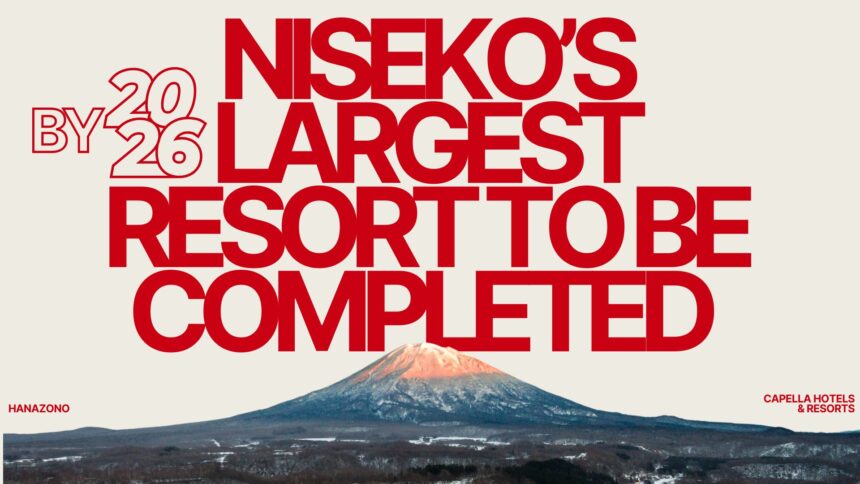The Capella Niseko project, which had been temporarily suspended, has resumed construction and is now scheduled for completion as early as 2026.
Meanwhile, as I mentioned in my previous blog post, the recent news about La Plume Niseko Resort entering bankruptcy proceedings is not a sign of a broader “bubble collapse,” but rather an isolated case.
There are several reasons why the value of Niseko real estate is expected to remain resilient:
(1) The extension of the Hokkaido Shinkansen to Sapporo has been postponed to fiscal year 2038, delaying the peak of investment expectations;
(2) The majority of property purchases are made with cash by wealthy investors, which helped prices remain stable even during the Lehman Shock;
(3) Over 22 large-scale developments are still ongoing, and land prices continue to rise at an annual rate of 5–10%.
Let’s dive deeper into the details.
Latest Updates on the Capella Niseko Project
- The project is being developed by “KAKERU,” a special purpose company backed by Singaporean investment group Shening Investment and others.
- It features a three-story hotel with one basement floor, three condominium buildings, and about 30 subdivided villas, covering a total floor area of approximately 110,000 square meters, according to Hokkaido Shimbun.
- Although construction was temporarily halted in 2020 due to rising material costs and design revisions, the project has now resumed and is expected to be completed in 2026.
Additional Note:
Capella Niseko is currently slated for completion as early as next year (2026).
La Plume Bankruptcy Does Not Signal a Bubble Collapse
- On April 8, 2025, the developer of La Plume Niseko Resort filed for bankruptcy with the Tokyo District Court.
- The main causes were reported to be soaring land acquisition costs and funding difficulties, rather than a fundamental supply-demand imbalance in the Niseko area.
- Like the Capella project, La Plume also faced setbacks, but Capella’s resumption shows that market demand has not disappeared.
Three Reasons Why Niseko Real Estate Remains Resilient
1 | Hokkaido Shinkansen Extension Delay Postpones Peak
- The opening of the Hokkaido Shinkansen line (from Shin-Hakodate-Hokuto to Sapporo) has officially been delayed from the end of fiscal 2030 to after fiscal 2038.
- Normally, infrastructure completion leads to sharp increases in real estate prices, but the delay helps spread out investment expectations and prevents short-term overheating.
2 | Strong Cash-Based Purchases Among Wealthy Investors
- Most property transactions are made without loans, making owners less likely to sell under pressure during financial crises.
- During the 2008 Lehman Shock, many owners held onto properties without significant price declines, as confirmed by industry reports and academic studies.
3 | Ongoing Large-Scale Developments and Sustained Tourism Demand
- As of 2024, over 22 hotel and residential development projects are underway.
- With international flights resuming and a favorable yen exchange rate, inbound tourism has rapidly recovered, with a 59% increase in total overnight stays by foreign visitors compared to pre-pandemic levels in 2023.
- Land prices have continued to rise at an annual rate of 5–10% over the past decade, and Niseko remains competitively priced compared to other international ski resorts.
Conclusion
While some individual developments in Niseko have stalled,
- The delay in infrastructure completion allows for a longer investment timeline,
- High rates of cash purchases by wealthy investors prevent major price collapses, and
- Continuous large-scale developments and strong tourism demand all contribute to the durability of Niseko’s real estate market.
The restart of the Capella project symbolizes this resilience.
When selecting land or making investment decisions, it is crucial to carefully assess each developer’s financial strength and project management capabilities while keeping sight of Niseko’s “long-term growth story.”
